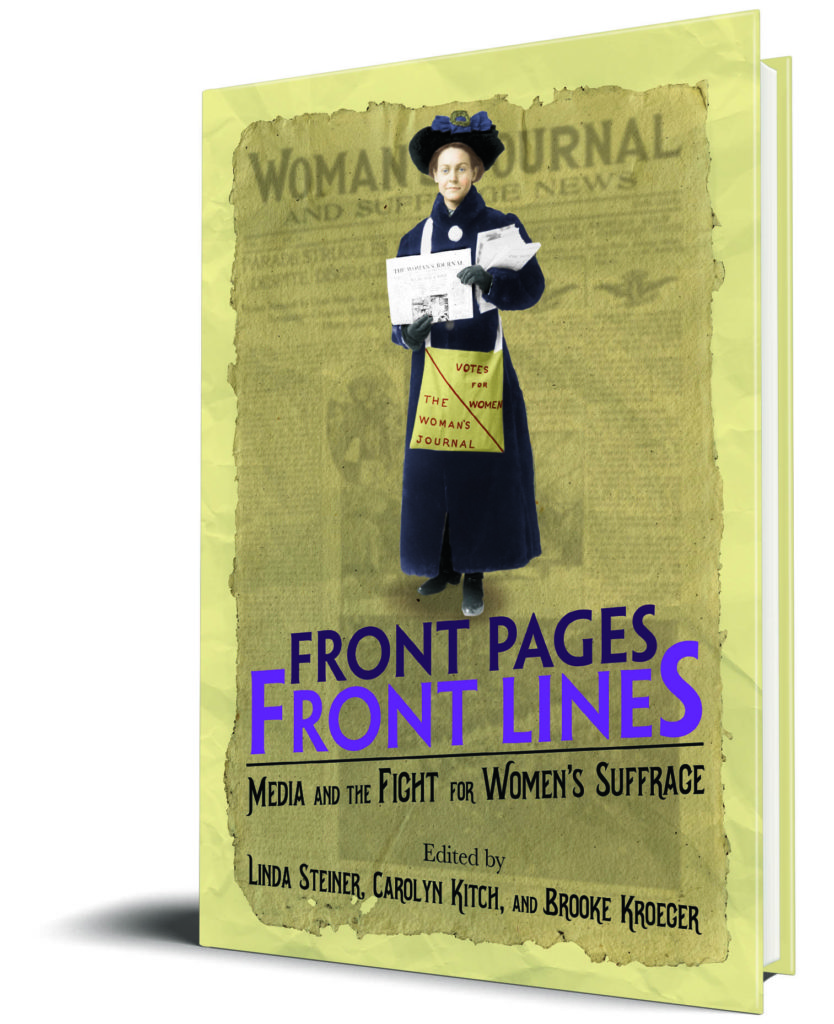Video Interviews with the Authors of Front Pages, Front Lines
Links to all video shorts for the chapters of Front Pages Front Lines are below. Read more about the book here.
“Lumsden offers a comprehensive historiography of suffrage and the media that highlights the near one-dimensionality of much of the early scholarship. She analyzes what historians, journalism studies researchers, and sociologists have found—and what they have ignored—beginning in the 1970s, when feminist scholars began to look back at both suffrage editors and mainstream news media coverage of the campaign.”
View page
“Steiner argues that the suffrage and women’s rights papers of the nineteenth century created and experimented with very different versions of the new woman, and then dramatized and celebrated these identities.”
View page
“Bennion shows how the prosuffrage arguments of the Women’s Exponent, published for Mormon women, were reformulated in response to regional political shifts, using various rationales to counter attempts to disenfranchise polygamous women.”
View page
“Broussard addresses black women journalists and coverage of black women’s positions on suffrage, looking at both the suffrage activities of black women journalists and the black press coverage of black women’s participation in the movement, which was controversial in black communities across the country.”
View page
“Rhodes examines the positions of black periodicals attached to socialism or the Communist Party, as well as black nationalist papers, regarding suffrage and black women’s suffrage activism. She focuses on the post–World War I era, when black periodicals conveyed the anxiety and grievances about a widespread backlash against black American soldiers, urban antiblack violence, and lynching.”
View page
“Grasso compares the approaches to women’s suffrage adopted by the NAACP’s The Crisis, under W.E.B. Du Bois, and The Masses, edited by Max Eastman and primarily serving white readers. Both magazines vigorously supported women’s suffrage, but Grasso analyzes their ‘differently radical’ approaches.”
View page
“Finneman draws on US news coverage to examine the rhetorical strategies of the anti-suffragists in representing themselves and their adversaries in 1917, when they began to lose significant ground with journalists as the progressive arguments of the suffragists gained more traction with journalists.”
View page
“Marcellus offers a close reading of the Nashville press as the country watched to see if Tennessee would become the final state to ratify the 19th amendment. She contends that for both the Nashville Tennessean and the Nashville Bannert, competing views of Southern white masculinity were at stake.”
View page
“Kroeger shows the importance and influence, especially during the suffrage movement’s final decade, of high society women and men who enjoyed elite status as socialites, businessmen and professionals, especially as editors and publishers of important newspapers and magazines, and how suffrage leaders cultivated these recruits and the useful resources they brought.”
View page
“Beasley examines how suffrage organizations and their new outlets shifted their policies, positions, and philosophies in the 1920s, analyzing the after-enfranchisement efforts of suffrage activists to decide whether to enter the existing male power structure or concentrate on women’s advancement outside of it.”
View page
“Kitch analyzes how cover stories in Time, Life, and Newsweek, in the context of reporting on the so-called second wave of the women’s movement, both remembered and forgot the women’s suffrage movement and alternated between or combined celebration and dismissal of feminism, using suffrage memory at both ends.”
View page
“Forde’s Afterword returns to white southern suffragists’ ‘unholy alliance’ with white supremacy, including through the support of the leading suffragist periodical in the South. Indeed, she points out that in the early twentieth century, the National American Woman Suffrage Association (NAWSA) capitulated to southern prejudice, for example, by acknowledging the right of southern chapters to exclude black women from membership.”
View page
